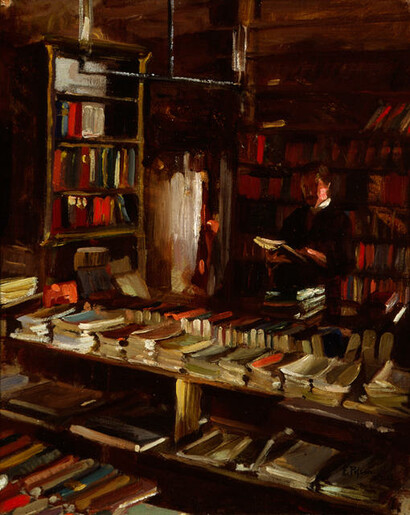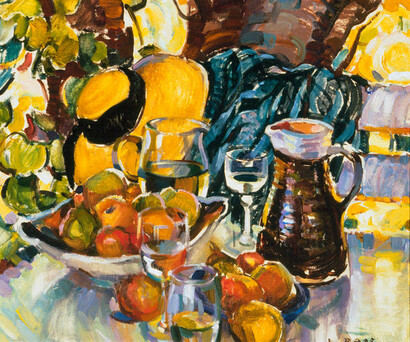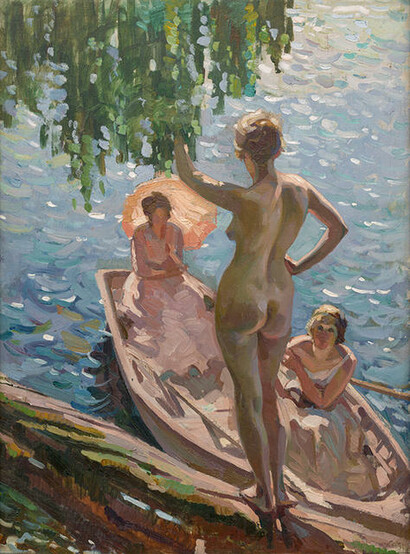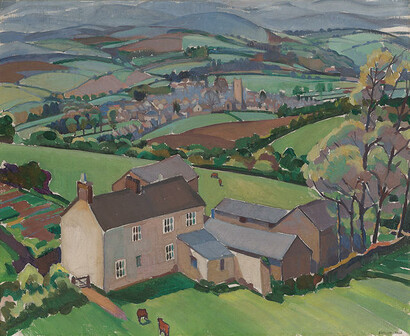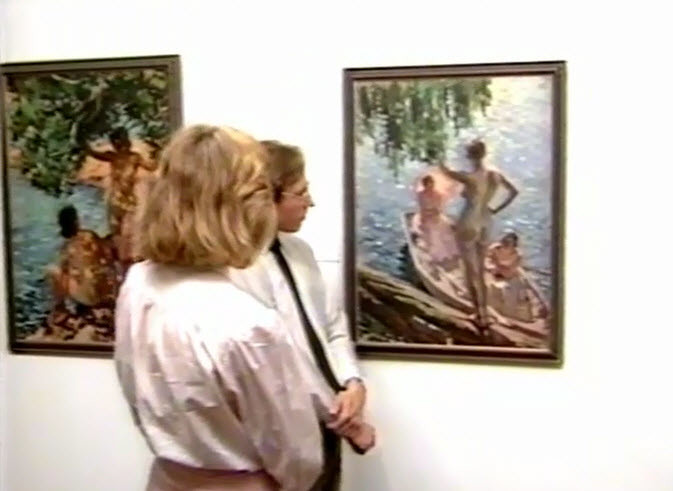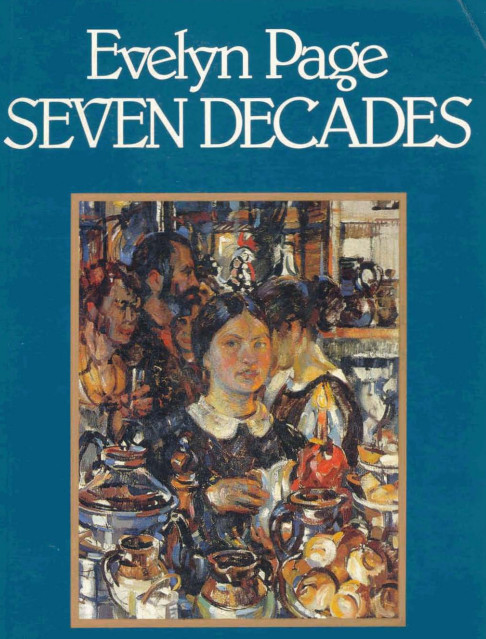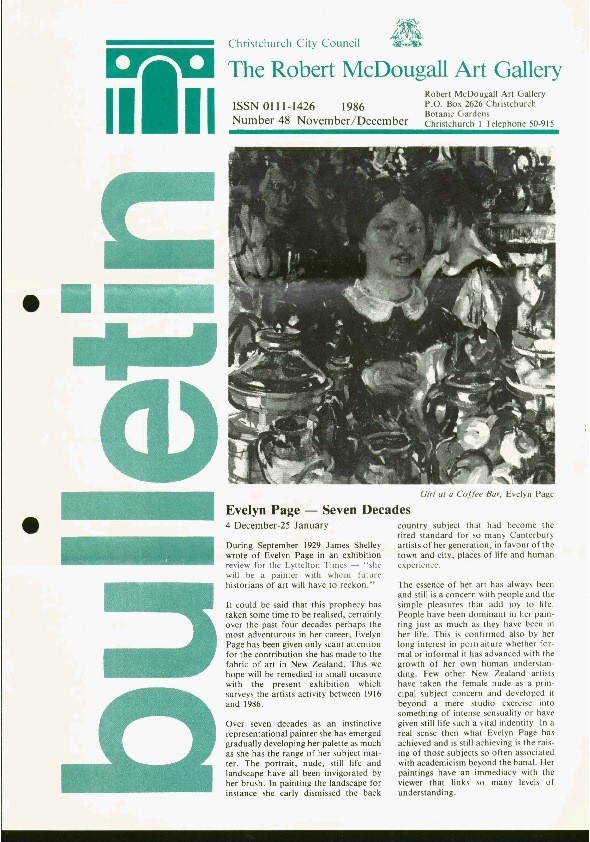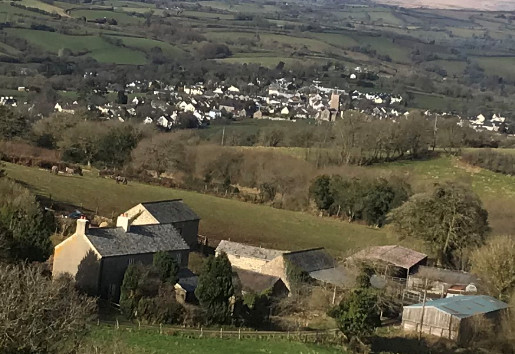This exhibition is now closed
Evelyn Page: Seven Decades
4 December 1986 –
25 January 1987
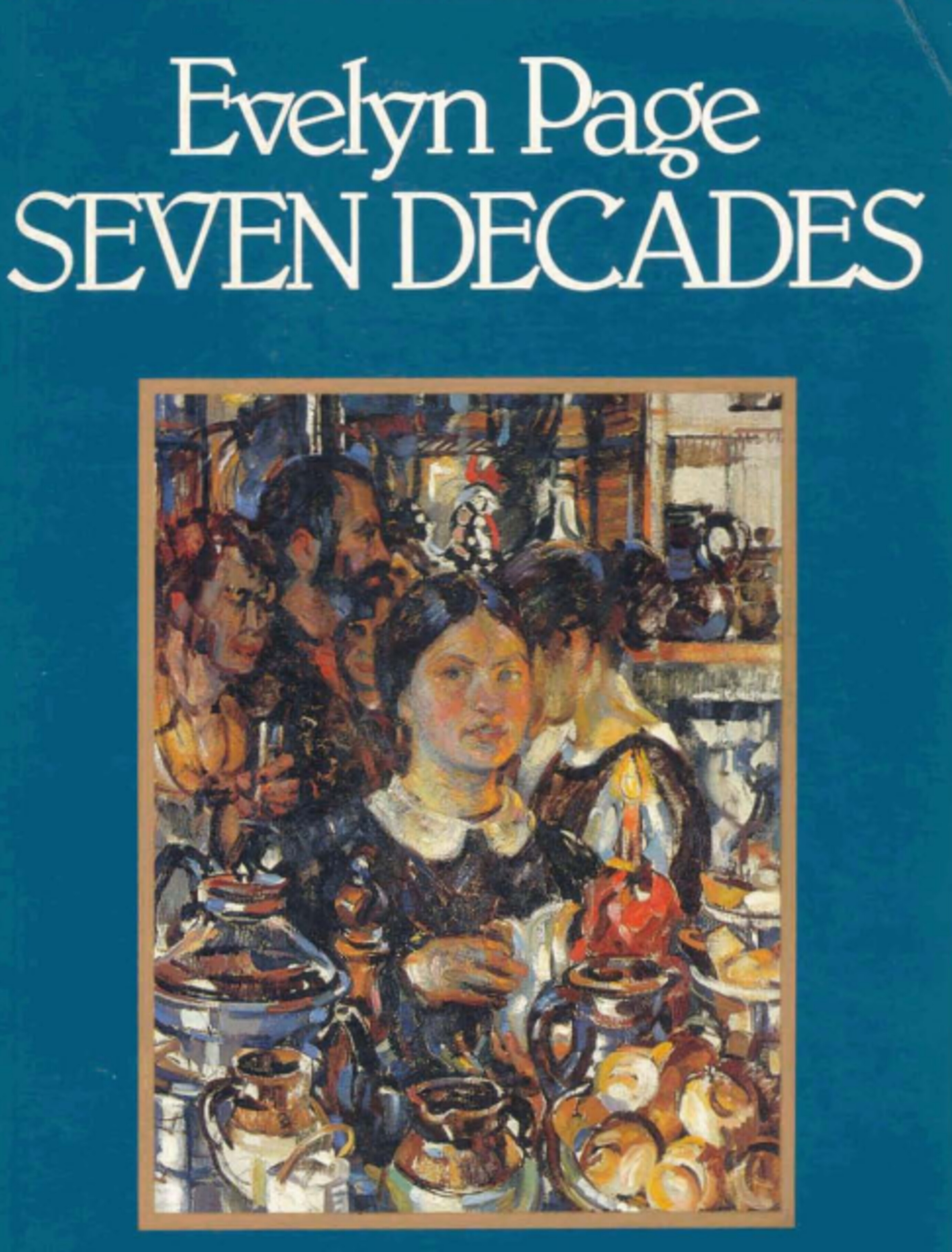
During September 1929 James Shelley wrote of Evelyn Page in an exhibition review for the Lyttelton Times – "she will be a painter with whom future historians of art will have to reckon."
It could be said that this prophecy has taken some time to be realised, certainly over the past four decades perhaps the most adventurous in her career, Evelyn Page has been given only scant attention for the contribution she has made to the fabric of art in New Zealand. This we hope will be remedied in small measure with the present exhibition which surveys the artist's activity between 1916 and 1986.
Over seven decades as an instinctive representational painter she has emerged gradually developing her palette as much as she has the range of her subject matter. The portrait, nude, still life and landscape have all been invigorated by her brush. In painting the landscape for instance she early dismissed the back country subject that had become the tired standard for so many Canterbury artists of her generation, in favour of the town and city, places of life and human experience.
The essence of her art has always been and still is a concern with people and the simple pleasures that add joy to life. People have been dominant in her painting just as much as they have been in her life. This is confirmed also by her long interest in portraiture whether formal or informal it has advanced with the growth of her own human understanding. Few other new Zealand artists have taken the female nude as a principal subject concern and developed it beyond a mere studio exercise into something of intense sensuality or have given still life such a vital identity. In a real sense then what Evelyn Page has achieved and is still achieving is the raising of those subjects so often associated with academicism beyond the banal. Her paintings have an immediacy with the viewer that links so many levels of understanding.
Throughout her long career as a painter one thing is paramount and that is that her vision has always been sure and singular. She has looked out objectively at the 'real' world through what she has termed "her window". This is important as no matter what the stylistic features of her paintings have been the direction has always been firmly under her control. She has always remained open about her interest in British and European modern masters who have from time to time played a part in influencing her stylistic ideas. However Evelyn Page's painting has not been a self conscious New Zealandisation of British and European traditions but rather a careful assimilation for her own independent purpose. Whatever speculation there might be as to influences upon her work one factor is inescapable and that is the disciplines of her formative training at Canterbury College School of Art.
Evelyn Page (nee Polson) was born in Christchurch in 1899. In her youth she was considered something of a prodigy in painting and music. Both have remained an abiding passion throughout her life. Between 1915 and 1921 she attended Canterbury College School of Art where she proved to be equally prodigious gaining many successes including the School of Art medal in 1919.
During the early 1920s she began exhibiting publicly and continued further studies in Music. For a time she seriously considered giving up painting to pursue a music career.
By 1930 harsh economic circumstances of the time forced her into earning a livelihood as a teacher of art. She was fortunate to gain a position at Canterbury College School of Art which she held until 1936 when she left Christchurch to travel to Britain. Before travelling overseas she held her first solo exhibition which was a considerable success.
The time that she spent away enhanced her personal vision greatly and was of much benefit to her on her return in 1938. That same year she married the noted Canterbury musician Frederick Page later Professor of Music at Victoria University of Wellington. They set up home in the old Dyer homestead 'Waitahuna' at Governor's Bay and over the years that followed entertained and assisted a unique circle of some of the most prominent figures in the arts, Ngaio Marsh, Charles Brasch, Ernst Plishke, Douglas Lilburn, J. H. E. Schroeder, Denis Glover and Douglas McDiarrmid, were jut a few who were regular guests. Although Evelyn Page had other demands on her time during the 1940s, including an infant family, she still continued to paint. In 1947 following her husband's appointment to the staff of Victoria University she moved to Wellington. It was during this time that the range of colour on her palette can be seen to have broadened and that vitality of expression which is now her strength began to emerge.
In 1950 she visited Britain and Europe where she also painted. On her return she continued to exhibit, and in 1952 held her second major solo exhibition, this time in Dunedin.
A visit to China as part of a New Zealand Cultural Mission followed in 1956 which provided the artist for a time with a new source of imagery.
By the early 1960s a stylistic maturity can be said to be evident in Evelyn Page's work and in 1966 she was awarded a QEII Arts Council grant to study at the Kokoschka School in Vienna.
Over the past two decades she has remained active as a painter although arthritis has slowed her output in recent years. During that time she has continued to exhibit and has begun to receive some recognition. In 1983 she was the first recipient of the Governor General's Award and was made a fellow of the New Zealand Academy of Fine Arts.
Through this exhibition Evelyn Page – Seven Decades we hope to not only pay tribute to one of Canterbury's most notable daughters but also provide the opportunity to show the New Zealand public the richness and vitality of Evelyn Page's painting which has established her place as one of this country's foremost colourists.
Following its showing in Christchurch the exhibition will tour nationally during 1987 and 1988, a tour that has only been made possible through the generous support of the QEII Arts Council.
('Evelyn Page – Seven Decades', Bulletin, No.48, November/December 1986, pp.1-2)
Exhibition number: 380

